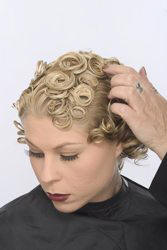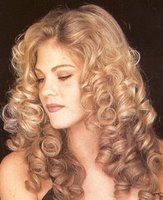 Common hair color mistakes are, well, just too common. Hot lines get claims like: “Help, I tried to bleach my black hair blonde and it’s orange.” Or, “I put crazy colors over my bleached hair and the pink won’t come out.”
Common hair color mistakes are, well, just too common. Hot lines get claims like: “Help, I tried to bleach my black hair blonde and it’s orange.” Or, “I put crazy colors over my bleached hair and the pink won’t come out.”Most problems come from overdoing it. Change your color too often, combine color with perms or straighteners or make extreme color changes, and you’re making hay.
If your color is all wrong or too-dark, put in this quick fix:
Mix:
Two ounces of shampoo — preferably, a cleansing product or one that removes build-up.
Two ounces of 20-volume stable peroxide. (This is not the hydrogen peroxide you cleanse cuts with; it’s especially for using with color and is sold in beauty supply stores.)
Powdered bleach—1/4 scoop.
Apply:
Using an applicator bottle or bowl and brush, carefully apply the mixture to color-gone-wrong as you watch in the mirror. The moment the mixture changes color (about 5 minutes), rinse well.
If you have the opposite problem: hair that hasn’t lightened enough, either your hair is too dark to go blonde in a single step or your product and timing was off. Whenever you go from light to dark or vice versa, rely on a professional. Ditto for repeat coloring.
Summary:
But if you’ve just ‘gotta do it, call the hotline number on the side of the color box before you color, tell all about you’ve done to your hair in the past, and get help.
Then, you won’t have to spend your time reading stuff like this, frantically hoping for a solution to Bozo orange hair that’s breaking off in handfuls.
And remember, do not save on cosmetics! Cheap cosmetics can't be good for you in any way!












